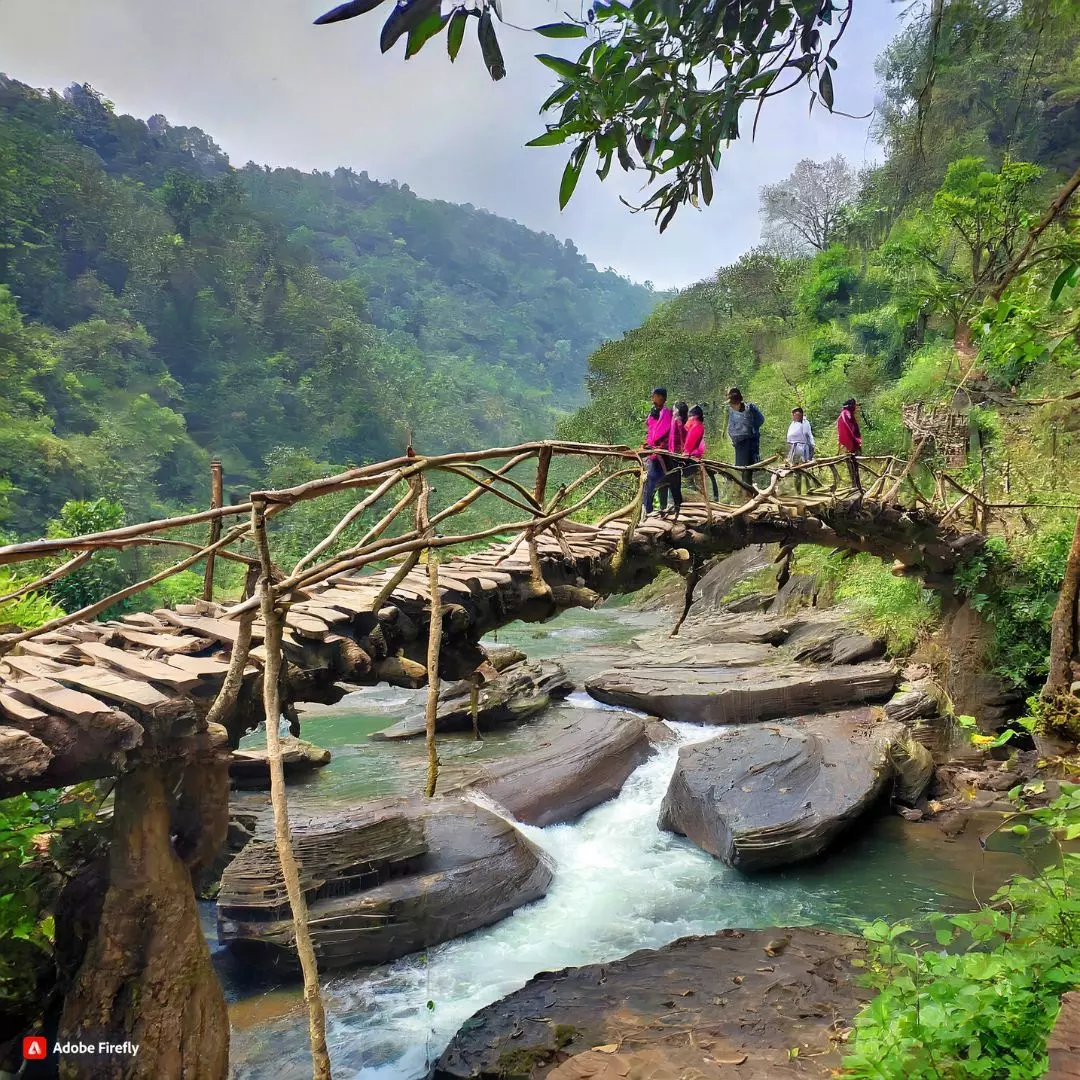
Meghalaya's Living Root Bridges Gain Recognition On UNESCO's Tentative World Heritage Site List
Writer: Darshita Jain
Exploring Boundaries, Breaking Barriers:Beyond the written word, I'm an adventurer, craving the thrill of discovering new places and meeting diverse souls. Whether it's the pulse of a city or the tranquility of nature, I'm on a perpetual quest to capture the essence of each destination, bringing readers along for the journey.
Meghalaya, 22 Dec 2023 7:30 AM GMT
Editor : Ankita Singh |
A literature lover who likes delving deeper into a wide range of societal issues and expresses her opinions about the same. Keeps looking for best-read recommendations while enjoying her coffee and tea.
Creatives : Darshita Jain
Exploring Boundaries, Breaking Barriers:Beyond the written word, I'm an adventurer, craving the thrill of discovering new places and meeting diverse souls. Whether it's the pulse of a city or the tranquility of nature, I'm on a perpetual quest to capture the essence of each destination, bringing readers along for the journey.
Meghalaya boasts approximately 100 living root bridges across various villages, with some of the most renowned ones located in Nongriat, Cherrapunji, Nongbareh, and others.
Meghalaya, home to some of the most enchanting natural wonders, has recently garnered global attention as its iconic living root bridges in Cherrapunji and neighboring areas secure a spot on the UNESCO tentative World Heritage Site list. These awe-inspiring structures, created by the indigenous Khasi and Jaintia tribes, not only serve as vital river crossings but also stand as living testaments to the symbiotic relationship between nature and human innovation.
The living root bridges, scattered across Meghalaya's West Jaintia Hills and East Khasi Hills districts, have a rich history dating back centuries. Crafted by guiding the pliable roots of the Ficus elastica, these bridges have played a crucial role in aiding local communities during the challenging monsoon seasons. Crossing rivers with overflowing waters, the indigenous people have skillfully woven an intricate network of living bridges that now hold cultural significance and environmental importance.
The process of constructing a living root bridge is a testament to human ingenuity in harmony with nature. The rubber fig trees are strategically planted on either side of a river, and over the years, their roots are meticulously guided, intertwined, and shaped by the hands of skilled bridge builders. The result is a natural marvel that blends seamlessly into the surrounding landscape, offering both functionality and visual splendor.
Biodiversity & Cultural Significance
Beyond serving as crucial pathways for farmers and villagers to access plantations and homes, the living root bridges contribute significantly to biodiversity. These living structures support pollinating insects, promote moss growth, and provide habitats for various wildlife, including squirrels and birds. The collaborative effort required for the design, management, and maintenance of each bridge fosters a deep sense of community and cultural pride among the locals.
Meghalaya boasts approximately 100 living root bridges across various villages, with some of the most renowned ones located in Nongriat, Cherrapunji, Nongbareh, and others. The Nongbareh living root bridge, standing for over a century, showcases mesmerizing beauty with its double-span structure over the Amayalee river. Additionally, destinations like Padu, Sohra, Kudeng Rim, and Dawki offer visitors a chance to witness these living wonders in the heart of East Jaintia hills.
These living root bridges play a pivotal role in the daily lives of the region's residents, offering access to plantations and homes. The collaborative effort required for their construction and maintenance strengthens community bonds and ensures their longevity. Additionally, these bridges support biodiversity, providing safe passages for animals and enhancing the overall ecological well-being of the region.
Meghalaya's living root bridges not only stand as remarkable examples of sustainable engineering but also highlight the importance of preserving indigenous knowledge and traditions. As these living marvels gain recognition on the global stage with their inclusion in the UNESCO tentative World Heritage Site list, they beckon travellers and conservationists alike to explore the unique blend of human creativity and nature's wonders in the lush landscapes of Meghalaya. Visit these living miracles and witness the harmonious coexistence of tradition and innovation in the heart of India's northeastern treasures.
Also Read: Gold's Enduring Allure In Modern Emerging Market Portfolios
 All section
All section














